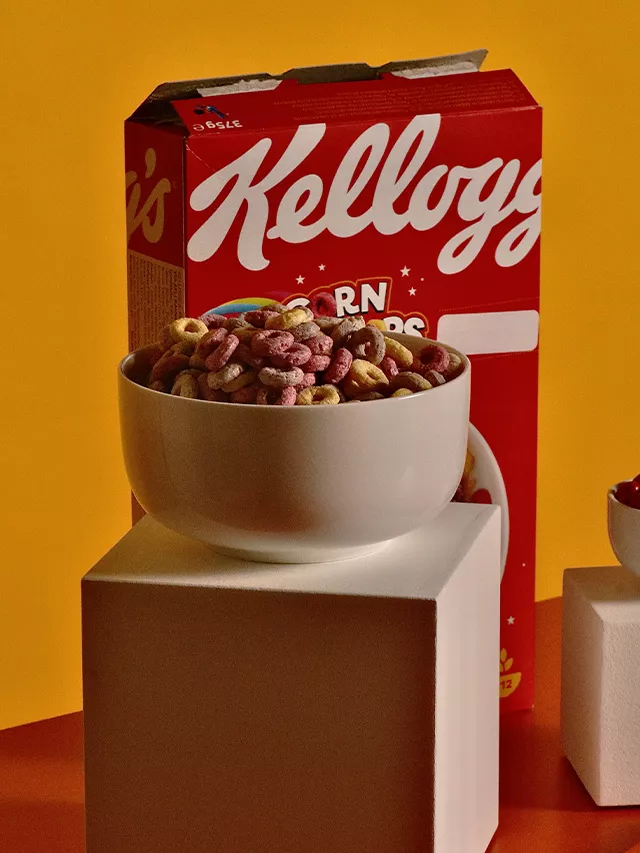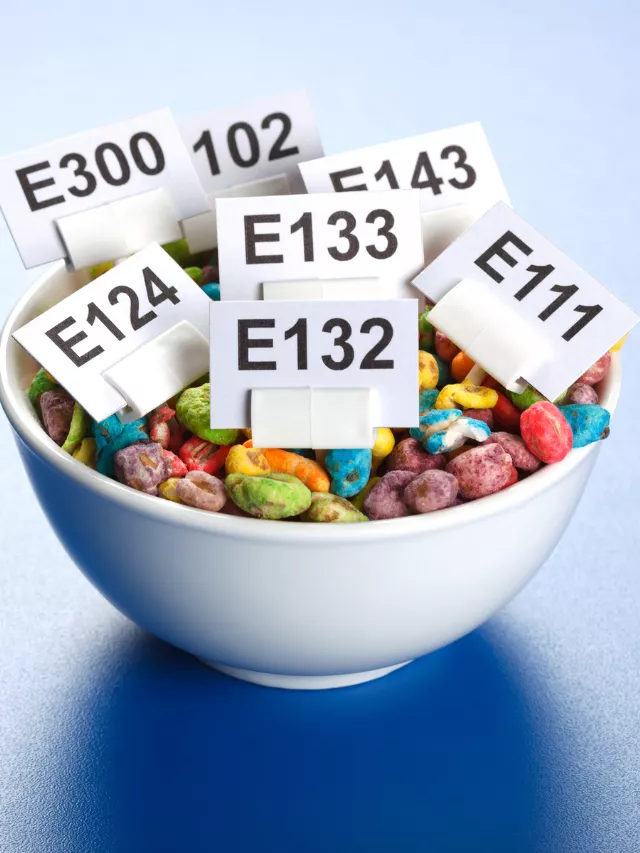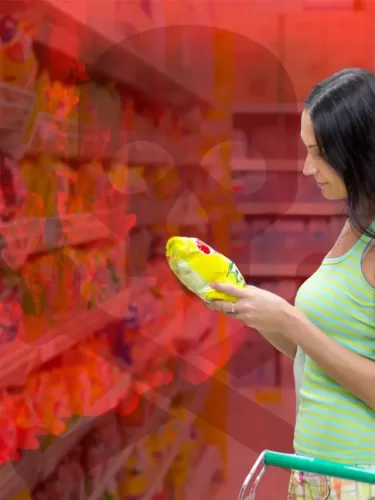Last Updated on March 28, 2025
In a significant move, the U.S. Food and Drug Administration (FDA) has banned the use of Red Dye No. 3 in food and ingested medications. This decision has reignited debates about the safety of synthetic food dyes and raised questions about the future of other artificial dyes still in use. For consumers who prioritize health-conscious choices, understanding synthetic dyes and their potential impact is vital. Here’s what you need to know.
- Food Dyes: Why Did the FDA Ban Red Dye No. 3?
- Will the FDA Ban Other Synthetic Food Colorings?
- What Are Other Synthetic Dyes Used in Food and Drinks?
- What Does the Research Say About Synthetic Dyes?
- What Is the Expert Opinion on Synthetic Food Dyes?
- What Food Dyes Are Approved for Food?
- What Are the Possible Harms Linked to Synthetic Dyes?
- Are There Gaps in FDA Regulation?
- What Are the Challenges for Consumers?
- How Can Consumers Be More Knowledgeable About Food Dyes?
- Final Thoughts
Food Dyes: Why Did the FDA Ban Red Dye No. 3?
Red Dye No. 3, chemically known as erythrosine, is a petroleum-derived synthetic dye that has been used for decades to give food and beverages a cherry-red hue. However, concerns about its safety have persisted since the 1980s. Studies showed that the dye caused cancer in lab rats, and under the Delaney Clause of the Federal Food, Drug, and Cosmetic Act, the FDA is prohibited from approving color additives that cause cancer in animals or humans when ingested.
Despite these findings, the dye remained in use for decades due to industry lobbying and regulatory inertia. Advocacy groups petitioned for its ban, and in 2023, the FDA finally revoked its authorization. Manufacturers have until 2027 to reformulate products containing this dye, a decision aimed at protecting public health.

Will the FDA Ban Other Synthetic Food Colorings?
The ban on Red Dye No. 3 has sparked speculation about the future of other synthetic dyes. While no official announcements have been made, experts and advocacy groups are calling for a reassessment of all artificial dyes still approved for use. Several states, including California and Pennsylvania, have already taken steps to restrict or ban other dyes, such as Red Dye No. 40 and Yellow Dyes Nos. 5 and 6, citing potential health risks.
The FDA has faced criticism for relying on outdated safety assessments conducted decades ago. With new research shedding light on the risks associated with synthetic dyes, future federal bans seem possible as public pressure mounts.
What Are Other Synthetic Dyes Used in Food and Drinks?
Currently, eight synthetic food dyes are approved for use in the United States:
- Red Dye No. 40 (Allura Red AC)
- Yellow Dye No. 5 (Tartrazine)
- Yellow Dye No. 6 (Sunset Yellow)
- Blue Dye No. 1 (Brilliant Blue FCF)
- Blue Dye No. 2 (Indigotine)
- Green Dye No. 3 (Fast Green FCF)
- Citrus Red No. 2 (used for coloring orange peels)
- Orange B (used for hot dog and sausage casings, though rarely).
While these dyes are commonly used to enhance the appearance of processed foods, their safety has been a topic of ongoing research and debate.
What Does the Research Say About Synthetic Dyes?
Studies have highlighted several health concerns related to synthetic dyes:
- Red No. 40: Linked to behavioral issues in children and contamination with benzidine, a known carcinogen.
- Yellow No. 5 and Yellow No. 6: Associated with hypersensitivity, behavioral problems, and cancer-causing contaminants.
- Blue No. 1: May cause allergic reactions and developmental delays in animals.
- Blue No. 2: Found to increase tumor risks in lab rats.
- Green No. 3: Linked to bladder tumors in animal studies [insert link].
Researchers also note that synthetic dyes may have cumulative effects on health, especially in children, who are more vulnerable due to their smaller bodies and developmental stages.
What Is the Expert Opinion on Synthetic Food Dyes?

Many experts advocate for stricter regulations or outright bans on synthetic food dyes. They argue that these additives offer no nutritional benefits and pose unnecessary risks. “There are no benefits besides profit, and there are significant risks,” said Jamie Alan, Ph.D., a pharmacology and toxicology expert.
Public health organizations and scientists emphasize the need for updated safety reviews and stronger consumer protections. They also highlight the precautionary principle—banning or limiting substances when their safety is in doubt—a standard already applied in Europe and other countries.
What Food Dyes Are Approved for Food?
While natural dyes like annatto and beet juice are available, synthetic dyes dominate the market due to their affordability and vibrant colors. The FDA-approved synthetic dyes include the eight mentioned earlier, each serving a specific purpose in processed foods, beverages, and medications.
However, the use of these dyes varies globally. Many of the synthetic dyes permitted in the U.S. have been banned in the European Union and Canada, reflecting differing regulatory standards.
What Are the Possible Harms Linked to Synthetic Dyes?
The potential risks of synthetic dyes include:
- Cancer Risks: Red Dye No. 3, Yellow Dyes Nos. 5 and 6, and Blue Dye No. 2 have all been linked to tumor formation in animal studies.
- Behavioral Issues: Dyes like Red Dye No. 40 and Yellow Dye No. 5 are associated with hyperactivity and irritability in children.
- Allergic Reactions: Blue Dye No. 1 and Yellow Dyes Nos. 5 and 6 can cause hypersensitivity.
- Developmental Concerns: Blue Dyes Nos. 1 and 2 have been linked to developmental delays in animals.
Are There Gaps in FDA Regulation?
Critics argue that FDA regulations on synthetic dyes are outdated. Safety assessments conducted in the 1960s and 1970s are insufficient by today’s toxicological standards. Advocacy groups contend that industry lobbying has hindered stricter regulations, leaving consumers exposed to potentially harmful additives.
Moreover, the lack of transparency in labeling—with dyes often listed by name but not quantity—makes it challenging for consumers to gauge their exposure.
What Are the Challenges for Consumers?

Avoiding synthetic dyes can be daunting. These additives are ubiquitous in ultra processed foods, beverages, and even medications. Reading ingredient labels is time-consuming, and many restaurant menus do not disclose dye usage. For busy consumers, navigating these complexities can feel overwhelming.
How Can Consumers Be More Knowledgeable About Food Dyes?
Here are some tips for becoming a more informed consumer:
- Read Ingredient Labels: Look for terms like “FD&C” followed by the color and number (e.g., Red 40, Yellow 5).
- Choose Natural Alternatives: Opt for products that use natural dyes like beet juice, turmeric, or spirulina.
- Limit Processed Foods: Reducing the consumption of ultra processed items can help minimize dye intake.
- Research Brands: Some companies prioritize natural ingredients and transparency.
- Advocate for Change: Support organizations pushing for stricter regulations and transparency in food labeling.
Final Thoughts
Synthetic food dyes remain a controversial topic in public health, with growing evidence pointing to their potential risks. The FDA’s ban on Red Dye No. 3 marks a step in the right direction, but it’s clear that more action is needed to protect consumers. For now, staying informed and making conscious choices can help mitigate the risks associated with artificial colorings. As the conversation evolves, so too should our commitment to understanding what’s in our food and how it impacts our health.
Benefits of Peptides: The Ultimate Guide to Buying High-Quality Supplements at Competitive Prices
Peptides are short chains of amino acids, that act as fundamental building blocks of proteins…
50 Well-Known Foods That Contain Red Dye No. 3 | 2025
In a world where health-conscious choices are more important than ever, Gen Z women are…
Are Tampons Safe? What You Need to Know and Safer Alternatives | 2025
A recent study published in Environmental International has raised alarms about the presence of toxic…
Foods to Eat on Your Period That Doctors Don’t Want You to Know About: Say Goodbye to Cramps & Mood Swings!
Foods to Eat on Your Period That Help Reduce Cramps & Improve Mood Period has…
6 Surprising Health Benefits of Gardening
Having a difficult day, anyone? If you’re anything like us, you probably have a busy…
6 Effective Grounding Techniques for Anxiety, Calmness, Health, and Mindfulness
During periods of uncertainty and stress, it’s vital to have grounding techniques for anxiety to…
- Successible Life Staffhttps://successiblelife.com/author/successible-life-staff/
- Successible Life Staffhttps://successiblelife.com/author/successible-life-staff/
- Successible Life Staffhttps://successiblelife.com/author/successible-life-staff/
- Successible Life Staffhttps://successiblelife.com/author/successible-life-staff/







